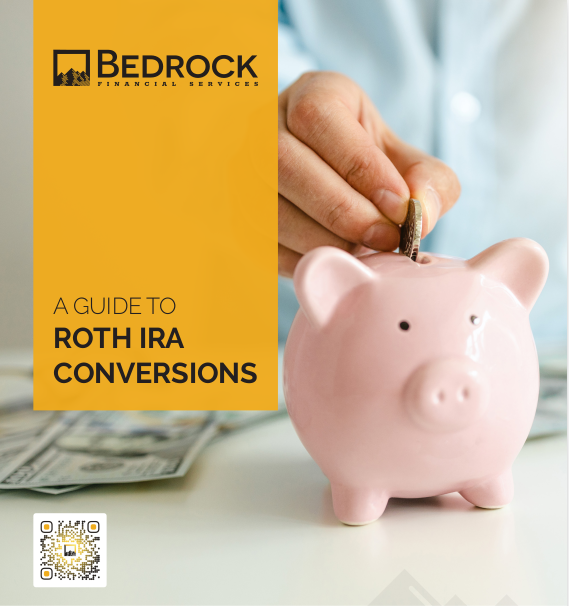Key Takeaways
-
Building trust with clients in 2025 isn’t about grand gestures. It’s about small, consistent actions that reinforce reliability, care, and follow-through.
-
The most effective financial professionals create micro-moments that prove dependability, turning one-time clients into loyal advocates.
Why Trust in Financial Services Is Built, Not Bought
In 2025, financial services continue to evolve, but the fundamentals of client trust remain deeply human. With more consumers wary of overpromising, you can’t rely on flashy guarantees or marketing bravado to win hearts. Instead, your clients are watching for consistent behavior over time—how you show up, how you communicate, and how you deliver small wins.
Trust isn’t earned with one big promise. It’s earned when a client sees that you follow up after a meeting without needing a reminder, or that you notice their birthday without a prompt. It’s in the subtleties that trust is cemented.
The Compounding Power of Micro-Wins
A micro-win is a small, intentional action that benefits your client and reinforces your credibility. These don’t require much effort but have a disproportionate emotional payoff.
Some examples of micro-wins include:
-
Sending a recap email right after a meeting
-
Following up on a task exactly when you said you would
-
Making a process feel easier than expected
-
Offering clarity without jargon
-
Checking in with no agenda
Each of these shows that you’re organized, thoughtful, and invested. And when you repeat these behaviors over a few months, clients start to relax. That relaxation is a signal of growing trust.
How to Systemize Trust-Building Moments
Trust isn’t scalable if it’s all reactive. To grow sustainably, you need to turn these micro-wins into systems.
Here’s how:
Build a Trust Calendar
Create a recurring workflow that includes:
-
Quarterly check-ins (even if nothing is wrong)
-
Annual review scheduling reminders
-
A reminder to send birthday or milestone messages
-
Timed follow-ups post-meeting (within 24 hours)
By turning trust into a repeatable system, you free up headspace and make consistency your competitive edge.
Use Templates Without Losing Warmth
You don’t have to write every email from scratch. Instead, develop friendly templates that:
-
Confirm meeting outcomes
-
Provide simple summaries of next steps
-
Reinforce your availability for questions
Templates ensure no one falls through the cracks. And when they’re well-written, they sound intentional—not robotic.
Record the Small Stuff
CRMs shouldn’t just track financial data. Use your CRM to log details like:
-
Children’s names
-
Preferred communication styles
-
Personal interests or past vacation plans
These notes let you personalize each interaction. When you recall something specific six months later, the client sees you as attentive and invested.
What Breaks Trust in 2025
It’s not always a huge mistake that shatters client confidence. Often, it’s the erosion from missed micro-moments.
Common trust breakers include:
-
Late responses, especially when promised otherwise
-
Forgetting prior conversations
-
Not acknowledging concerns the client already voiced
-
Using language that feels confusing or sales-driven
These moments, even if unintentional, feel careless to the client. And once doubt creeps in, every future interaction is filtered through it.
To build enduring client relationships, your margin for inconsistency must be razor-thin.
Trust Is the Best Retention Strategy
In an industry where switching costs are low and competition is high, client loyalty is a currency of its own.
Financial professionals who excel at building trust see:
-
Higher long-term retention
-
Increased referrals (without needing to ask)
-
Clients who are more open to advice and change
-
Easier upsell conversations (because the relationship is strong)
All of this is a byproduct of trust. Not effort for effort’s sake, but sustained, intentional proof that you care.
Why Timelines Matter
Trust compounds. But unlike interest, it doesn’t happen automatically. It’s active, not passive.
You should think about trust in 3 timeframes:
1. First 7 Days
-
Send a personalized welcome or thank-you message
-
Reiterate expectations and next steps
-
Share helpful materials that reinforce your expertise
This short window sets the tone for everything that follows. If you disappear during this time, trust is lost before it ever starts.
2. First 90 Days
-
Deliver on your first promise—on time, without exception
-
Offer small, proactive updates
-
Show progress, even if incremental
Clients will evaluate whether working with you was the right decision. Micro-wins here lock in emotional security.
3. First Year
-
Complete a full annual review
-
Anticipate a new opportunity or concern before they mention it
-
Invite feedback and act on it
Trust by the 12-month mark should feel like second nature—not a performance. If your client looks surprised when you do something thoughtful, it means consistency hasn’t taken root yet.
Make Trust Visible
Clients can’t always see your behind-the-scenes effort. So make your actions visible. Share what you’re doing, not to boast, but to reassure.
Say things like:
-
“I went ahead and reviewed your portfolio before our meeting to save us time.”
-
“I’ve added a reminder to check in on this again in 30 days.”
-
“You mentioned this was stressful, so I created a simplified breakdown.”
These reinforce that you’re attentive. Trust grows faster when clients can connect the dots between your behavior and their benefit.
Technology Should Enable, Not Replace, Relationship Building
Automation can help you deliver consistency, but it shouldn’t remove your presence.
Use tools in ways that:
-
Enhance reminders, not send robotic messages
-
Trigger personal check-ins, not replace them
-
Support compliance and tracking while keeping interactions human
In 2025, clients expect high-tech, high-touch service. The right balance is not either-or—it’s both.
Feedback Loops Strengthen Long-Term Trust
Clients trust professionals who ask for input—and act on it. Feedback isn’t just for troubleshooting. It’s a tool for growth.
Ways to encourage feedback:
-
Ask for a quick rating after a review meeting
-
Send a short survey every 6 months
-
Invite them to share what’s been helpful (or not)
Then, close the loop. If they suggest a change, acknowledge it—even if you don’t adopt it.
When clients see you listening, adapting, and improving, their trust deepens. It shifts the dynamic from transactional to collaborative.
Build a Culture of Micro-Wins in Your Practice
Trust-building can’t sit only on your shoulders. If you work with a team, make sure everyone is aligned on:
-
Tone of communication
-
Timing expectations
-
Client preferences
-
Follow-up standards
Your team is an extension of your brand. If they deliver inconsistent experiences, it undoes your hard work.
Create a culture where every member looks for and delivers small wins—on purpose.
Trust Is Earned in Minutes and Lost in Seconds
You don’t need to promise the world to earn loyalty. You need to consistently show clients that you care, that you remember, and that you deliver. These tiny wins, spread over weeks and months, are what make clients stay.
At Bedrock Financial Services, we specialize in helping professionals like you build systems that reinforce trust at every step. Whether it’s automating check-ins or refining client journeys, we help you scale the relationship-building that sets you apart. Sign up today and discover how we can support the kind of experience your clients will never forget.







